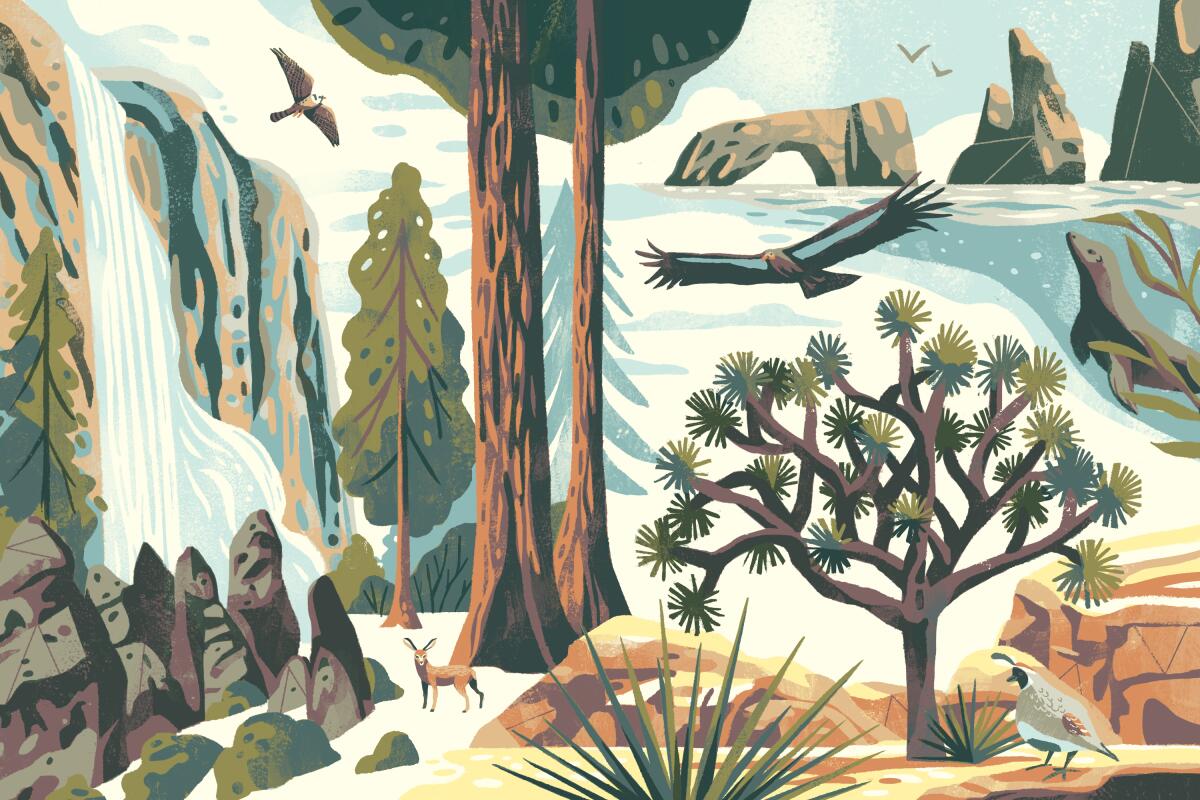
Every national park you can drive to on a weekend trip from L.A.
When it comes to national parks, L.A. travelers hit the jackpot: I count seven within the state near enough to be reasonable destinations for a weekend trip — as long as you’re game for a long drive. Here’s the list, from closest to farthest. (We chose downtown Los Angeles as a common starting point. And yes, as Angelenos, we measure distance by predicted driving time — not miles.)

Subscribers get exclusive access to this story
We’re offering L.A. Times subscribers special access to our best journalism. Thank you for your support.
Explore more Subscriber Exclusive content.
Note: If you plan to visit a national park, read the L.A. Times’ guide on what to expect, and check park websites for the most current updates. National parks are experiencing record numbers of visitors, and it takes everyone’s effort to make the parks safe and enjoyable for all.
Who wants to take the 7 Park Challenge?
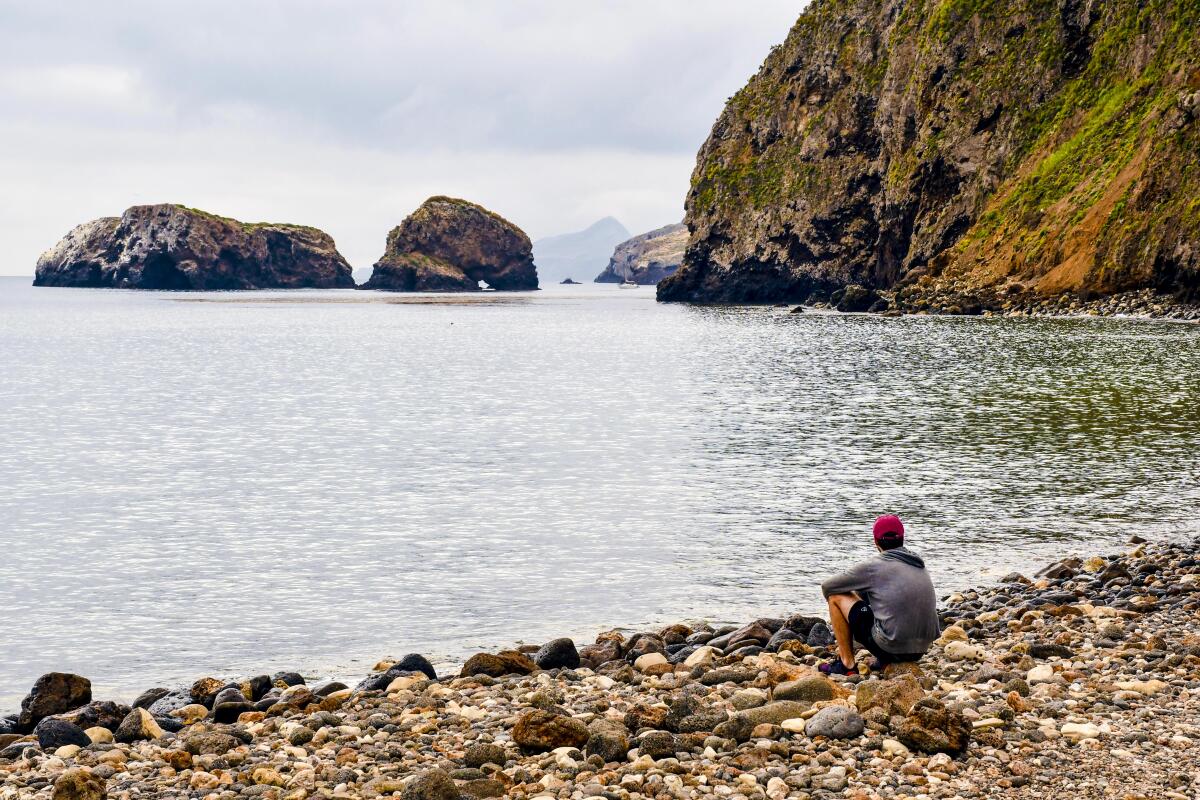
Channel Islands National Park
What makes it great: Despite its proximity to Los Angeles and other metropolitan areas, Channel Islands is the least visited national park in California — a world away from the crowds associated with Yosemite and Joshua Tree.
Comprising five islands, the park has a “choose your adventure” feeling. Casual travelers may opt for a day trip or a single overnight stay on Santa Cruz Island, just an hour from Ventura Harbor. (Anacapa Island, another popular day trip, is temporarily closed to the public.)
More experienced backpackers may feel drawn to Santa Rosa Island, where my colleague Lila Seidman and her partner spent five days hiking last year. One unexpected encounter of their trip: a 2,000-pound elephant seal who showed up outside their tent.
Perhaps most appealing, the park’s golden expanses and craggy cliffs offer a rare glimpse at what the Southern California coast looked like before widespread development.
Where to stay: I loved my October 2019 stay at Scorpion Canyon Campground on Santa Cruz Island, a half-mile walk from the boat landing. A few friends and I spent the afternoon snorkeling through kelp forests off Scorpion Beach before embarking on a full-moon hike.
Bonus tip: Keep your eyes peeled for the island scrub jay, found only on Santa Cruz Island. The island fox, which lives on just six of the eight Channel Islands, is another visitor favorite.
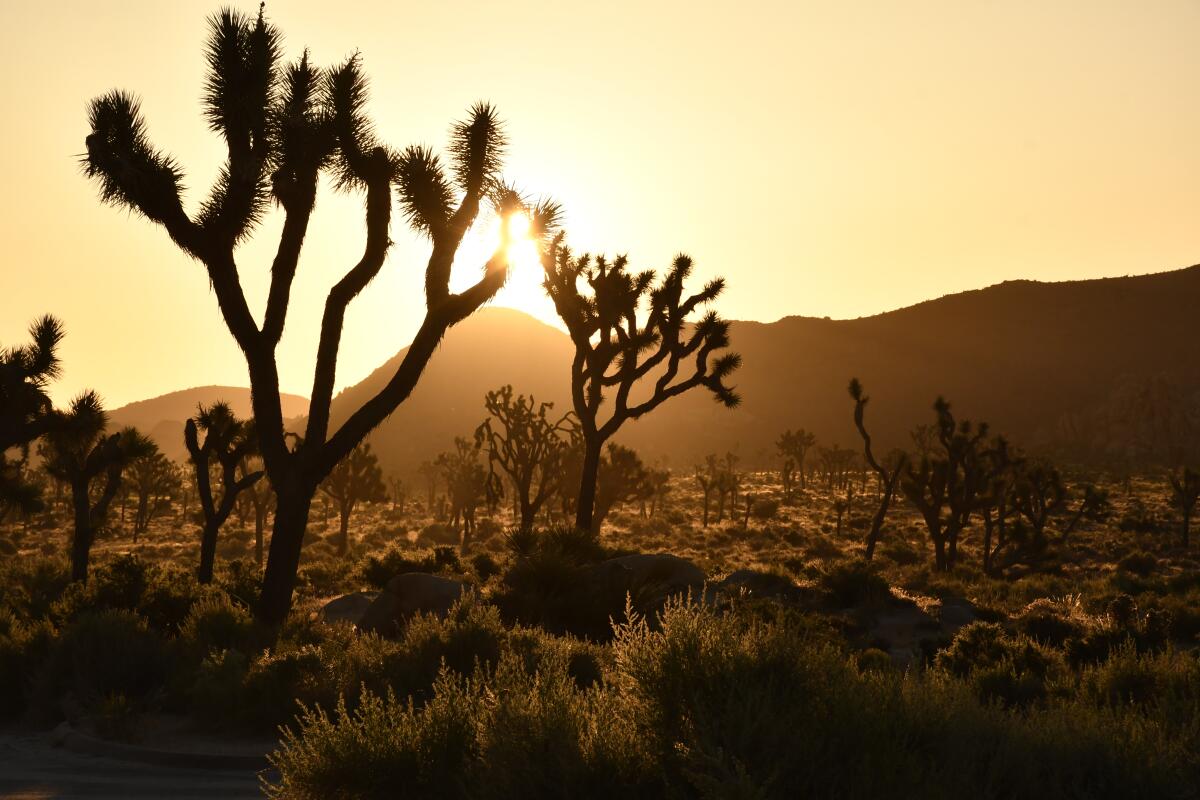
Joshua Tree National Park
What makes it great: Whether you love multinight backpacking trips or prefer to retreat to a hip hotel after a day of hiking, Joshua Tree National Park has something for everyone.
It’s also a busy place, with more than 3 million visitors in 2021, up 50% since 2015, my colleague Christopher Reynolds reported. With the crowds come concerns about traffic, the water supply, rising rents and more.
If you go, carefully follow all park rules, expect crowding and bring plenty of water. Here are more tips from park officials.
Where to stay: I enjoyed my stay at Cottonwood Campground near the south entrance of the park. During a December visit, the campground felt very far away from influencer-flooded spots such as Skull Rock.
As for hotels, one place that’s been on my California bucket list for years is the Joshua Tree Inn — relatively affordable with rates beginning at $138 per night.
Bonus tip: To avoid the heaviest crowds, an Escapes reader recently suggested using the park’s north entrance in Twentynine Palms as opposed to the popular west entrance at Joshua Tree Village.
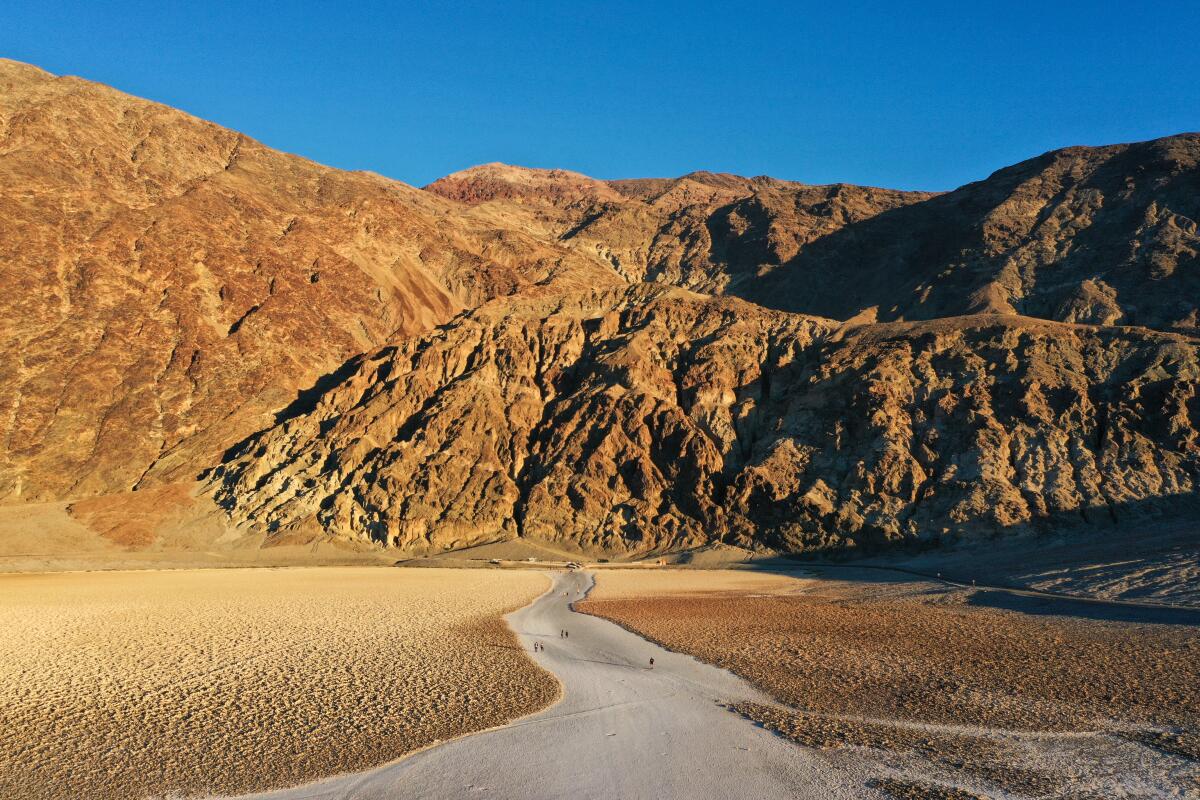
Death Valley National Park
What makes it great: Death Valley is well known as the National Park Service’s “hottest, driest and lowest” park. Indeed, the park’s Badwater Basin — 282 feet below sea level — is the lowest point in North America.
It’s also a place of great beauty, which Times contributor Sharon Boorstin considers “most astounding at sunrise and sunset.”
“At Zabriskie Point, the rising sun threw a spotlight on Manly Beacon, a crooked spire rising out of the badlands, turning its washed-out sand color to gold,” she described in a 2019 story. “At the Artists Palette viewpoint, the rays of the setting sun revealed bands of red, blue and green in the mineral-rich hills.”
Interested in hiking? The Wild writer Mary Forgione recommends the three-mile Mesquite Flats trek. “This dune-it-yourself journey goes through some of the most accessible and beautiful sand dunes in California,” she wrote.
Where to stay: It might surprise some travelers to find an ultra-luxe hotel in such a harsh locale. But that’s part of the Oasis at Death Valley’s sumptuous appeal. Though the inn will be closed from June 1 to Sept. 14, its casitas can still be rented over the summer.
Within the park, Furnace Creek Campground is a sought-after spot that often fills up during the winter and spring. Only a few campgrounds remain open during the summer due to the park’s extreme heat.
Bonus tip: Don’t miss the “secret foodie haven” just outside the park. Times contributor Robert Earle Howells describes the delights of Tecopa Bistro, Tecopa Brewing Company and the bluntly named Steaks and Beer.
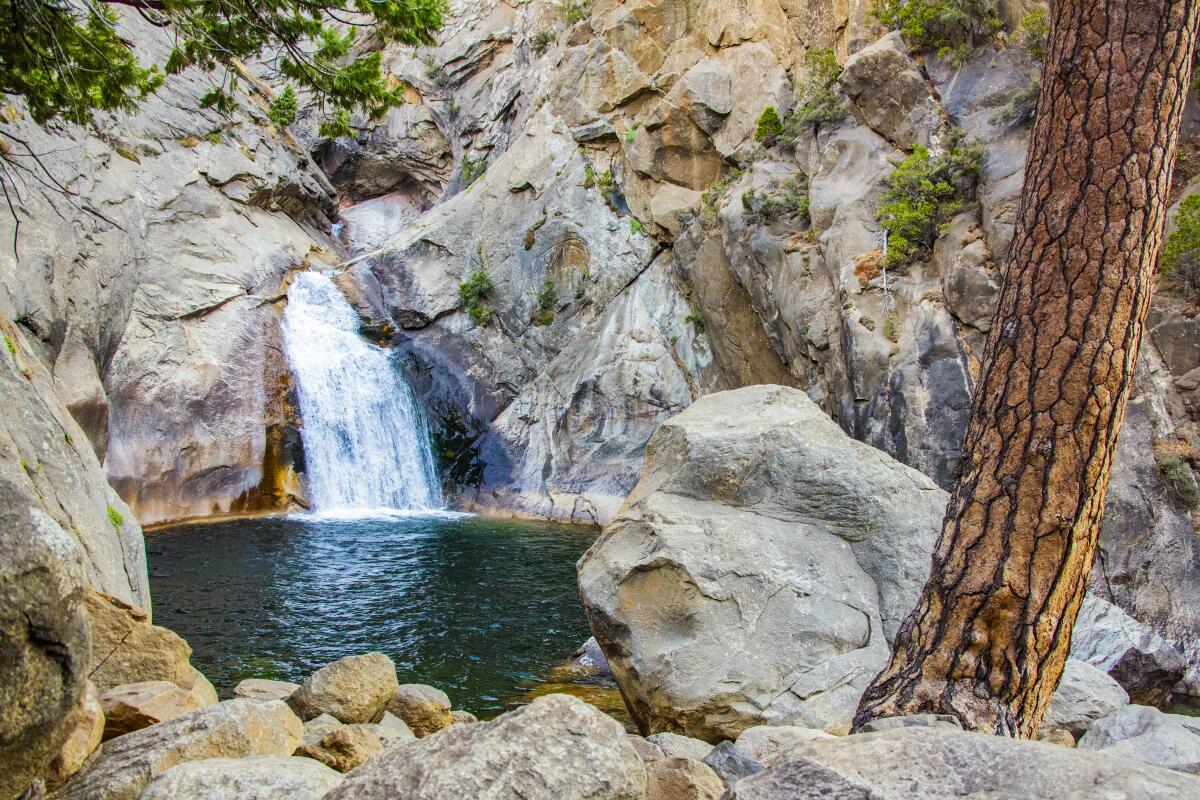
Sequoia and Kings Canyon National Parks
What makes it great: Like Death Valley, Sequoia and Kings Canyon National Parks are places of extremes.
“Sequoia has the largest trees on the planet and Mt. Whitney, the highest point in the Lower 48,” Times contributor Rosemary McClure reported in 2019. “Kings Canyon is by some measures considered the deepest canyon in the country.”
It’s also a place of devastation following the KNP Complex fire, which ravaged the area last fall. More than 2,000 giant sequoias burned to death or were expected to die within several years due to the fire, Times staff writer Sarah Parvini recently reported.
A bright spot on the horizon for travelers: The portion of Generals Highway between Sequoia and Kings Canyon has reopened for the season, giving visitors a convenient way to drive between the two parks.
Where to stay: Though the two parks boast several excellent campgrounds, I am partial to Hume Lake Campground, in nearby Sequoia National Forest. The lake, originally created to support a logging operation, is now a great place to swim after a morning hike in the summer.
Prefer to stay in a hotel? The Buckeye Tree Lodge, mentioned by McClure in her story, is in Three Rivers, just outside the Ash Mountain Entrance to Sequoia.
Bonus tip: It’s always good to be bear-aware but especially when you’re in the Sierra, where travelers frequently spot black bears. Here’s what you should know about camping and exploring in bear zones.
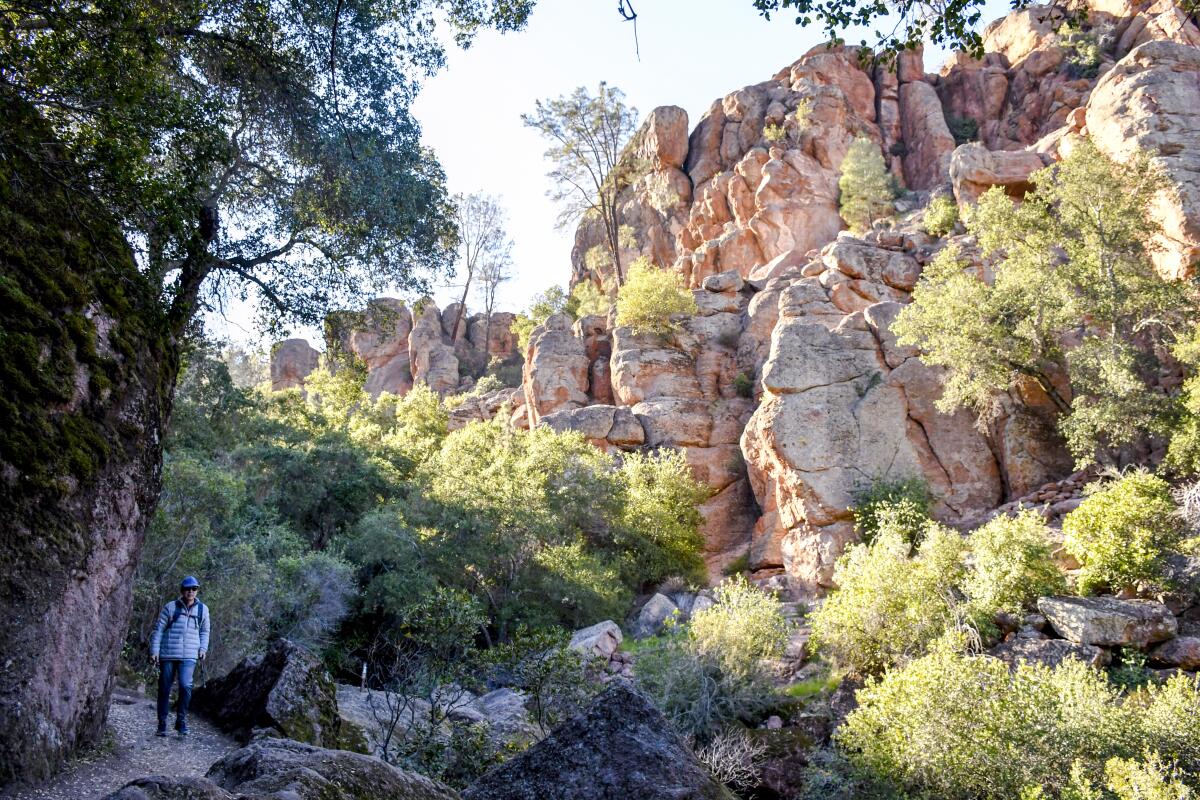
Pinnacles National Park
What makes it great: Pinnacles is California’s smallest national park, making it an ideal choice for short-term visitors.
But don’t let its size fool you: With hiking, caving and condor spotting, there’s no shortage of things to do.
Most of the park’s caves are accessible to visitors in fall, winter and spring, when the bat population is hibernating, as Christopher Reynolds learned on a recent trip. For hikers, it’s hard to beat the views from High Peaks Trail and Condor Gulch Trail.
For all its good qualities, Pinnacles poses some logistical challenges, Reynolds writes. There’s very little parking, which is especially problematic on weekends and holidays when the park gets “extremely high visitation.”
The solution? Visit on a weekday or arrive early. “Expect long lines and delays getting into the park between 9 a.m. and 3 p.m,” park management said.
Where to stay: Pinnacles Campground, accessible only from the park’s east side, offers 134 sites, plus a swimming pool that is usually open from mid-April through the end of September, depending on weather.
Hotels near the park are somewhat few and far between, but the Inn at the Pinnacles offers a few upscale suites for any park visitors interested in splurging.
Bonus tip: Less than an hour and a half from Monterey, Pinnacles is a great stop to incorporate on a Highway 1 road trip along the Central Coast. Driving north from Los Angeles, spend a day exploring Paso Robles wine country, followed by a day hiking through Pinnacles. Then, loop around to the coast, taking Highway 1 back to Southern California.
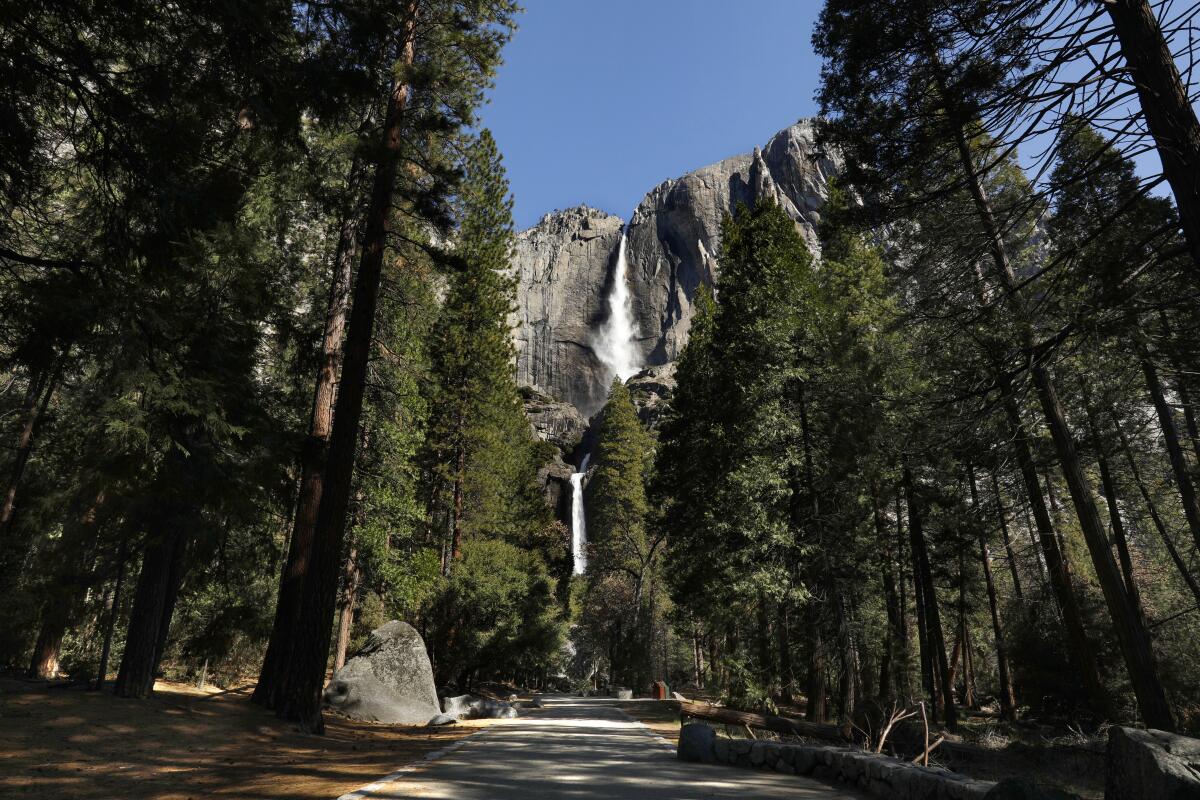
Yosemite National Park
What makes it great: Yosemite National Park is a long way to travel from Los Angeles for just a weekend. But I’ve done it twice and have no regrets.
My biggest recommendation: Get an early start, especially if you plan to drive around the often-congested Yosemite Valley. Each time I visited, I woke at dawn to begin hiking; the trek to Upper Yosemite Falls was particularly memorable, with a close-up view of the water rushing over the cliffside into the valley below. Finishing the journey midday allows plenty of time for kicking back at your campground or along the Merced River.
Where to stay: Despite its crowds, pitching a tent at one of Yosemite Valley’s campgrounds can be a convenient way to make the most of a trip to the park, especially for first-time visitors. (A few years ago, I camped at North Pines, where park officials are piloting a new lottery system.)
Unable to snag a campground or lodging within the park this summer? There are lots of affordable options just outside the park, contributor Rosemary McClure reported in 2019. Queen’s Inn, which has a wine bar and beer garden on site, looks especially appealing.
Bonus tip: It’s important to plan ahead when visiting any national park but especially when considering a trip to Yosemite. From May 20 through Sept. 30, visitors will need a reservation to enter Yosemite between 6 a.m. and 4 p.m. Here’s how the reservation system works.
Sign up for The Wild
We’ll help you find the best places to hike, bike and run, as well as the perfect silent spots for meditation and yoga.
You may occasionally receive promotional content from the Los Angeles Times.



